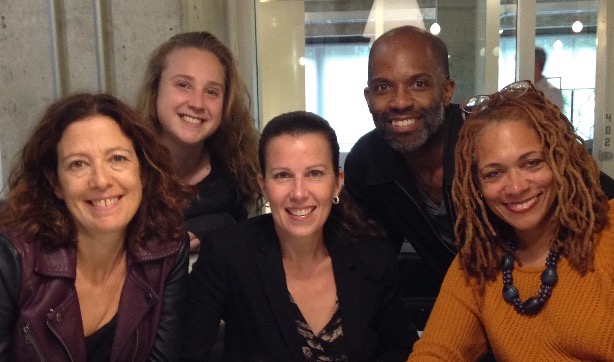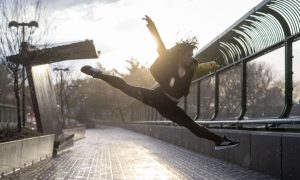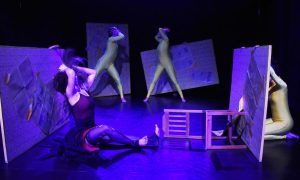Starting a professional career in dance is thrilling but knowing where to start can be stressful. To help young professionals start their career on the right foot, Fran Kirmser created the new online training program titled Make Dance Your Business. Created during the pandemic, this vital course demystifies the ins and outs of starting a professional dance career.
Through Make Dance Your Business, dancers can take courses focused on topics that help with every step of the way in a professional career.
One course focuses on two things every dancer will need: a headshot and a resume. “You have to have one and it’s so simple,” Kirmser says. Both the photo and the document should be updated regularly to reflect your every-changing looks and experience.
When it comes to your headshot, Kirmser says the key thing is to make sure it looks like you.
Although there are many professional photographers available to help you get a great shot, many dancers are taking their photos on their phones! If you plan to do a DIY headshot, she recommends the following tips:
- Showcase your features with your makeup. Don’t look like a cartoon character.
- Solid-colored clothing is best. Stay away from bright white or dark black. Use a hue that is good for your skin tone.
- Have a very plain background that won’t take away from you.
- Use natural lighting.
When it comes to making a resume, Kirmser says to have it be a text snapshot of your experience as a dancer as well as what you want to do.
At the top should be your name bolded and either left or center justified. This should be the name people actually call you. For example, if your name is Thomas but everyone calls you Tom, put Tom as your name.
Next, put your identifiers (height, eye color, hair color) as well as your contact information (phone number, email address). If you are a minor, this could be your parent/guardian’s contact information instead. You do not need to include your physical address on your resume. Outside of safety precautions, not including your address can benefit you if you’re auditioning for a role that’s based outside of where you reside.
“Let’s say you live in California, and you’re going to an audition in New York,” Kirmser notes. “If you say your physical address is in California, you may be overlooked because they might not be interested in hiring out-of-town talent.”
Next, list your credits and shape them based on the type of audition you’re going into. “Research is key,” Kirmser says. “It’s really important to choose the credits based on what you’re auditioning for or what opportunity you’re about to go into.”
For example, if you are going into a musical theater audition and have one musical theater credit, put that credit at the top, then follow it with additional performance experience credits. “Even though it’s one credit, putting that theater credit first shows the casting director, the choreographer, everyone behind the table, where you want to go,” Kirmser says. “It shows us that you have had experience. If the next week you go on a dance audition for something that isn’t theater, put the dance credits first and move the theater credit down.”
If you are just starting out in your career and don’t have many credits to list, use this space as an opportunity to elaborate on your training. Did you do any performances at school or in a training program? What styles did you train in? Who did you study with? Put it all down so the casting director can get a feel for where your skill set may be.
At the end of your resume, share your special skills. What are some things that make you stand out? Just remember that whatever you put down, you should be ready and able to do it on the spot.
Now you have your headshot and resume. What’s next? Put together a reel!
In her session titled “Websites and Reels,” Kirmser shares that just like your headshot and resume, your reel should be an ever-changing document that showcases you for the job you’re hoping to book.
According to Kirmser, many auditions are looking at reels before moving dancers to the next round of an audition, as it gives the person watching it a taste of how you move. She recommends having the reel be about 45 seconds to two minutes in length.
“We just want to see how you own your space,” she continues. “It’s great to include some solo footage and some footage of you in an ensemble so we can see how you dance with others. You want to slate it very cleanly on either side, so your headshot and your name and contact. Don’t include the credits while you’re moving because you want them to focus on how you move.”
Now that you have your basics together, it’s time to find an audition. Kirmser says there are so many outlets both in print and online to find information, so get out there and read. “Google is your best friend.”
You might even come across an audition notice as you browse social media. Just remember to vet auditions before committing to them to verify they are legitimate!
Another great way to find out about opportunities, or to connect with an agent or manger, is by simply having conversations. “The best opportunities and agent-client matchups happen because a friend knows somebody,” she shares. “You feel better because someone you know has already worked with them, and your friend can speak to your representation, your character and who you are.”
If you found these tips helpful, or you’re interested in learning more, you can sign up for Make Dance Your Business here.
Come back and read our next edition of Dance Informa to read Kirmser’s tips on having a successful audition.
By Lauren Kirchmyer of Dance Informa.















